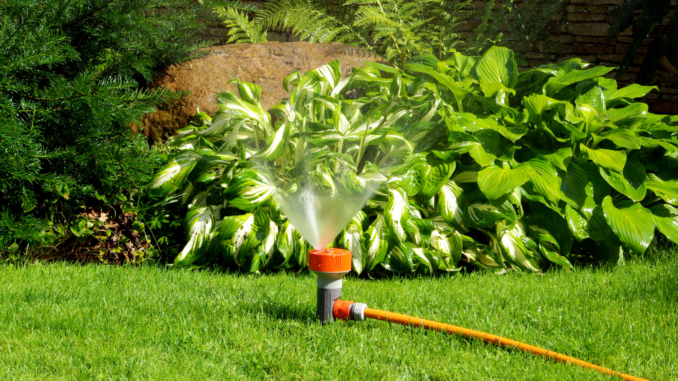
Sherry Fuller, Horticulturist, Gardens on Spring Creek
Watering is one of the most basic things plants need to survive, but one of the hardest to learn to do well. As a horticulturist, I’m often asked how much water a particular plant needs, and I’m sure I frustrate the questioner by sounding evasive. But there are so many factors to take into account, it is very difficult to give a concise answer. Things like plant type, how large it is at planting, the soil it’s planted in, whether it’s in sun or shade and what the weather is like all play a part.
We’ve been blessed this spring by good precipitation, but we live in a dry climate and drought is always a concern. Couple that with water quality issues from last year’s fires and water conservation is definitely the right thing to do here.
Almost all plants from trees to turf to perennials grow best with irrigation that is less often, but longer in duration when it is applied. This fills the root zone with water, allowing the roots to grow deep and broad, making the plant healthier and more able to survive if water is unavailable at some point. It also allows air to filter into the soil between waterings, and plant roots need that almost as much as water. Many of our lawn sprinkler systems are set to water for 10 minutes every other day or some similar timing. This does create a lush, green lawn but also keeps the roots in the top few inches of soil.
This water schedule is also not ideal for other plants in the landscape. It is particularly problematic for newly planted trees and shrubs. Since their roots are only in the root ball you planted, they use any moisture there quickly. But 10 minutes of irrigation isn’t enough to replenish that entire ball, so often these new plants can die or fail to thrive.
A better system would be to begin irrigation in the spring with 15 to 20 minutes of water once or twice a week, increasing this to 20 to 30 minutes as temperatures increase. Learn how to change your sprinkler system controls and turn them off for a few days after a good rain. Learn to watch your turf and plants for signs they need water. Bluegrass will not spring back when you walk across your lawn when it’s very dry, leaving mashed footprints.
Another good practice is to group plants with similar water needs together. Native and drought-tolerant perennials, trees, and shrubs can be planted in areas farther from your hoses or sprinkler nozzles can be changed to provide less water to these areas.
Of course, vegetable gardens, container plants, and annual beds need more regular water, sometimes every day during summer’s heat. But even these plants will benefit from the less often, but longer watering schedule.
Support Northern Colorado Journalism
Show your support for North Forty News by helping us produce more content. It's a kind and simple gesture that will help us continue to bring more content to you.
BONUS - Donors get a link in their receipt to sign up for our once-per-week instant text messaging alert. Get your e-copy of North Forty News the moment it is released!
Click to Donate
